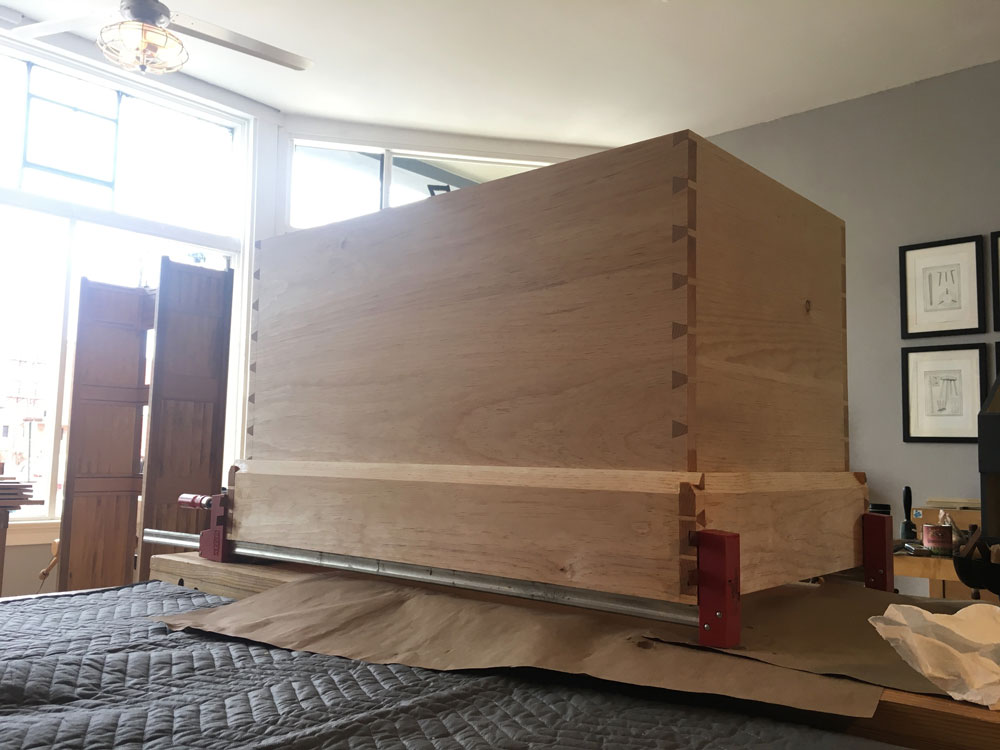We may receive a commission when you use our affiliate links. However, this does not impact our recommendations.
For dovetails, I use what I call a “redneck slope” – 1:4 or 14°. I like this slope because I’ve seen it on a lot of vernacular pieces I’ve studied.
It says: Dovetail y’all!
And not: Ill-defined box joint. But that’s just what my eye sees.
Truth is, dovetail slopes are more about fashion than their mechanical properties. When I started woodworking, my head was injected with a lot of dogma about 1:6 and 1:8 ratios, softwoods and hardwoods, drawers and carcases.
But if you look at the historical record, you will find dovetails that are both nearly 1:1 in slope and those that are 2:1 (26.6°). These joints have survived for hundreds of years and show no signs of quitting.
Do what you like.
Or do what is appropriate for the furniture you like to build.
If you like 15th-century Italian pieces, you should consider a bold slope of 20° or more, based on the pieces I’ve inspected. If you like 19th-century work, pick something with much less slope, such as 1:8.
And if you make contemporary pieces, my only recommendation is to stay away from the slopes used by the manufacturers of dovetail bits for routers and dovetail jigs. Otherwise your pieces will look less hand-cut.
I wrote that sentence above and then looked at a couple catalogs of router bits. It turns out that a lot of dovetail bits use slopes of 7°, 9° and 14° – my preferred favorite angle.
Curses. Maybe I should use 13° instead.
— Christopher Schwarz
P.S. Want a dovetail marker? You can make your own or buy a nice commercial version. My favorite has always been the one from Sterling. You can also get a great one from Woodjoy. And Veritas makes some nice ones, too.
Here are some supplies and tools we find essential in our everyday work around the shop. We may receive a commission from sales referred by our links; however, we have carefully selected these products for their usefulness and quality.










The narrowest point of the pin is also a giveaway. A router bit has a 1/4″ shank plus the added thickness for carbide cutters. This makes for a fat looking pin. Keeping the smallest point of the dove tail skinny give you a hand made look. This works best on drawers… (you may want fatter dovetail on a tool chest).
If you really want them to look handmade you should do 1:8 on the top of the tail and 1:4 on the bottom. That’s how I do mine…not on purpose. Nobody will ever think a machine did one of my joints.
I have also tried every angle that is thrown around when talking dovetails and 1:4 or around 14° is the best for me. I like it simply because in the spectrum of degrees it’s where the joint starts to look like an actual dovetail instead of a badly cut box joint.
1:8 is about 7 degrees, which is what early through dovetail jigs used. They looked far too much like box joints, and I stayed far away. 1:6 is about 9.5 degrees, and is also not very aesthetically pleasing, though certainly strong enough. While I know it’s apples and oranges, Morse tapers are only about 1.5 degrees, and are plenty strong.
I started doing a lot of sliding dovetails early on, and the Ulmia dovetail plane/router bit duo I used are both 14 degrees (which is about a 1:4.75 slope). I bought a manufactured dovetail saddle marker in 14 degrees at the same time, and all of my dovetailing has been 14 degrees ever since. It’s all I use, so my eye can tell if I’ve laid something out wrong. And I think it looks nice.
Also, 14 is the number of days from a new moon to a full moon. There are 14 lines in a sonnet. Tarot Card 14 is the symbol for self-control, necessary in a well cut dovetail. There are 14 pounds in one stone, and the number of days in a fortnight. 14 is the atomic number of nitrogen, which makes up 78 percent of Earth’s atmosphere. JS Bach, generally considered the greatest composer, encoded the number 14 into most of his music as a signature.
All right-thinking people will realize 14 degrees is the best number of degrees.